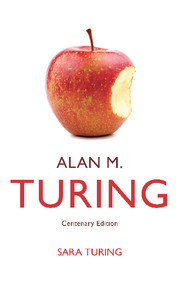Foreword to the Centenary Edition
Published online by Cambridge University Press: 05 April 2012
Summary
Sara Turing, a woman in her seventies mourning the death of Alan, her younger son, a man that she failed to understand on so many levels, wrote this remarkable biographical essay. She carefully pieced together his school reports, copies of his publications, and comments on his achievements by experts. But Alan Turing was a thoroughly unconventional man, whose method of dealing with life's situations was to think everything through from first principles, ignoring social expectations. And she was trying to fit him into a framework that reveals more about her and her social situation than it does about him. Alan's older brother John trying to fill in the gaps he saw in his mother's account, also ends up revealing a good deal about his own attitudes.In these few pages I will discuss some of the questions that may occur to readers of these documents.
Alan Turing's War
In 1940, after France had been defeated, Britain fought on mainly alone. The merchant shipping on which the island was dependent was being sunk by German submarines at a rate that threatened to force the UK to yield. The radio communications between the submarines and their base concerning their operational plans were being picked up in Britain. If these plans were known, attacks could be mounted against the submarines. Merchant ships could adjust their routes so as not to go where they would encounter enemy submarines. But of course the data was encrypted.
- Type
- Chapter
- Information
- Alan M. TuringCentenary Edition, pp. vii - xviiPublisher: Cambridge University PressPrint publication year: 2012



